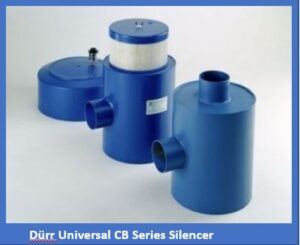Positive displacement (PD) blowers are vitally important for many applications in industries such as chemical, dairy, bulk handling, oil & gas and pulp & paper. But their drawback is that they are notoriously noisy and will need some type of silencing equipment to dissipate the noise. To meet the OSHA noise safety standards and to protect downstream equipment, selecting the right PD blower silencer is critical. I want to share some tips on what to consider in the selection process to avoid a costly mistake.
Silencer Selection Tips
During my 40 years of working with customers that use PD blowers in their operations, I have seen the good, the bad and the ugly when it comes to methods of silencing blowers. Here are a few of my tips to help you avoid mistakes in the selection process:
- Always use a discharge silencer to protect equipment down-stream of the PD blower. The discharge silencer serves the duel purpose of reducing noise and mitigating the sever pulsations produced by the blower.
- When over sizing a PD blower for an application, it may be possible to reduce the size of the silencer if the flow rate is below 5,500 feet per minute. However, if in the future the PD blower is needed to run at a higher flow rate, then the silencer will need to be replaced to handle the higher flow rate.
- Standard silencers are capable of handling operating pressures up to 15 PSIG. For anything above 15 PISG, an ASME stamped code silencer is needed for safety purposes.
- When in doubt of the silencer size to use, match the PD blower inlet and discharge connections.
- For PD blowers requiring large silencers, the side inlet/side outlet or opposed connection configuration of the silencer is a good way to reduce the amount of piping required to connect to down-stream equipment.
- When space is an issue, a compact blower silencer, such as the Dürr Universal CB Series, require only 1/3 of the space of a conventional silencer.
- For some applications absorption material can’t be used for high frequency attenuation. Dürr Universal was the pioneer of the three chamber silencer that provides the same high frequency attenuation as an absorption-chamber style silencer.

These are just a few tips that may help you avoid costly problems with selecting the right PD blower silencer. Of course, the right selection and sizing of a PD blower silencer is significantly more challenging than just following a few tips. The best way to get it right is to let Eldridge help you size and select the right PD Blower silencer for your application.
